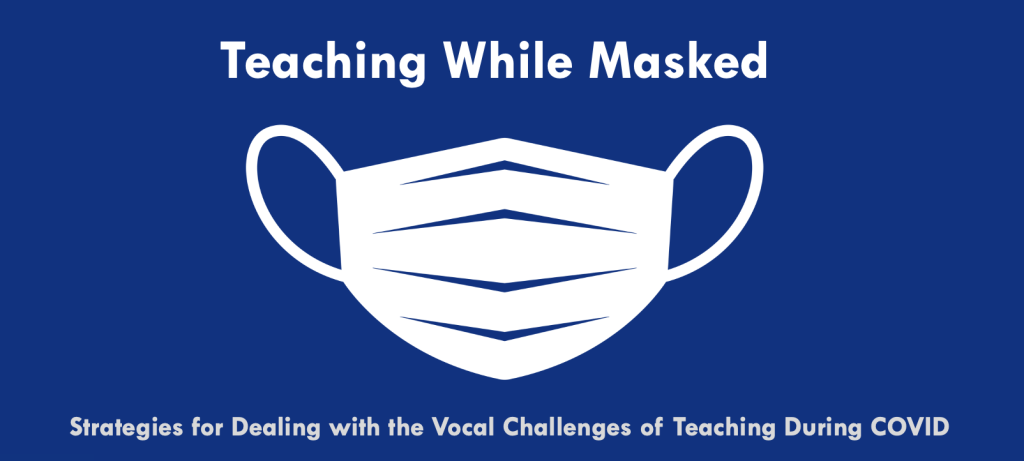Remote Teaching and Learning at Peabody
Tips for Teaching in a Mask

Teachers are heavy occupational voice users, vocal athletes of the highest order who rarely have been given all the tools they need to enable the voice to consistently meet the demands of the job and to avoid fatigue and injury. COVID-19 has exacerbated these vocal challenges. These tips offer strategies to lessen the strain and vocal fatigue related to teaching on Zoom and while masked.
These tips were created by Melissa Bidlack, MS, MM, CCC-SLP from the Johns Hopkins Voice Center and Margaret “Peggy” Baroody from the Peabody Insitute. A workshop was also offered, and that recording is available on the Faculty Digital Teaching Resources LMS site (JHED authentication required). For further questions concerning your teaching at Peabody, and specifically teaching while masked, please start by contacting Peabody’s Learning Innovation team.
Check mask fit.
A mask:
- Should not restrict your jaw or create jaw tension
- Should not cause ear/head pain
- Should allow lips to move freely. You can use a face mask spacer to move mask further from face.
Masks are not “one size fits all.” Take the time to find the right mask for you.
Consider a surgical mask for improved intelligibility.
Assess your acoustic space.
- Acoustically reflective spaces reduce speech intelligibility.
- Background noise also reduces acoustic signal – do your best to reduce this.
Check your vocal loudness.
Are you pushing? Or are you under-energized as a speaker?
- Speak at a comfortable loudness.
- Use amplification if desired. A number of inexpensive personal amplification devices are available at various retailers.
- Move closer to listener, but make sure to adhere to social distancing guidelines.
Try some of the approaches below.
- Slow speech rate.
- Over-articulate and exaggerate consonant energy instead of being louder.
- Exaggerate prosody.
- Breathe more often and more slowly; try not to take shallow chest breaths.
- Rely on more body language cues.
- Find nonverbal ways to demonstrate.
- Optimize your vocal resonance (if this is familiar to you)
Recommended vocal habits for teachers:
- Mind your vocal bank. Plan for each day knowing what teaching may cost your voice.
- Hydrate! Drink about half of your body weight in ounces daily.
- Warm up your voice before teaching and cool down afterwards with a few minutes of gentle humming or lip bubbles. These strategies can be use throughout the teaching day as well when you feel vocally tired.
- Take “vocal naps” during the day.
Disclaimer: Learning and using vocal resonance and lip bubbles should be under the guidance of a voice professional or speech language pathologist.
Virtual teaching tips:
- Use a headset to maintain conversational volume.
- Eliminate background noise.
- Ensure your students have the desirable programs to optimize sound.